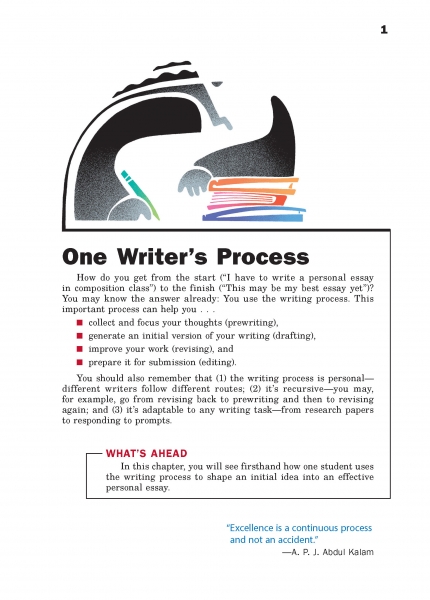Page 001 from

Start-Up Activity
Ask volunteers to describe the process they went through to come to school today. Some will probably talk about an elaborate ritual involving lengthy time in front of a mirror, a breakfast of some sort, a commute on one or more forms of transit, and other details. Others will talk about rolling out of bed, grabbing a backpack, and walking across the street to the school. Everybody has a different process for getting to school. What's important is that everyone arrives (ready to learn).
Point out that writing is much the same. Everyone follows a different writing process to go from having nothing to having a complete work ready to share. Let students know that this chapter will review one student's writing process while allowing students to experiment with their own.
Think About It
“In the writing process, the more a story cooks, the better.”
—Doris Lessing

Start-Up Activity
Ask volunteers to describe the process they went through to come to school today. Some will probably talk about an elaborate ritual involving lengthy time in front of a mirror, a breakfast of some sort, a commute on one or more forms of transit, and other details. Others will talk about rolling out of bed, grabbing a backpack, and walking across the street to the school. Everybody has a different process for getting to school. What's important is that everyone arrives (ready to learn).
Point out that writing is much the same. Everyone follows a different writing process to go from having nothing to having a complete work ready to share. Let students know that this chapter will review one student's writing process while allowing students to experiment with their own.
Think About It
“In the writing process, the more a story cooks, the better.”
—Doris Lessing


